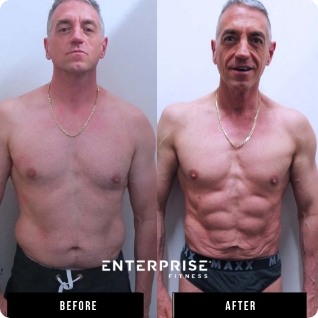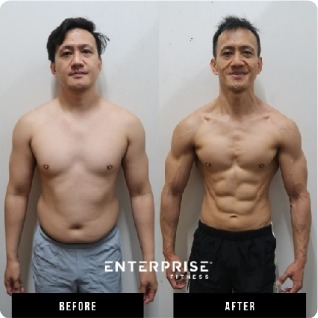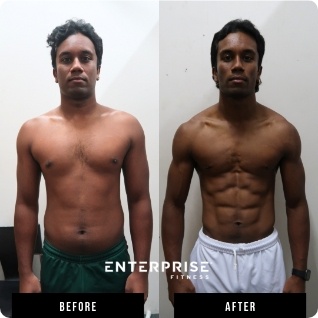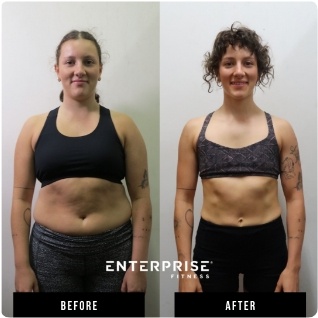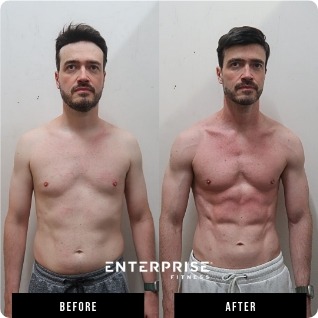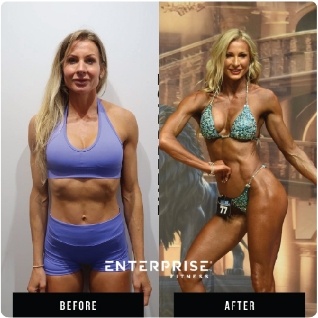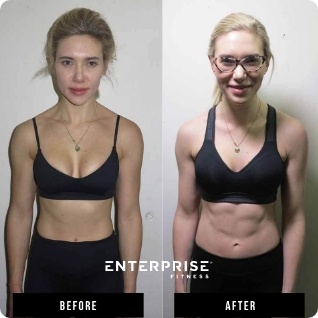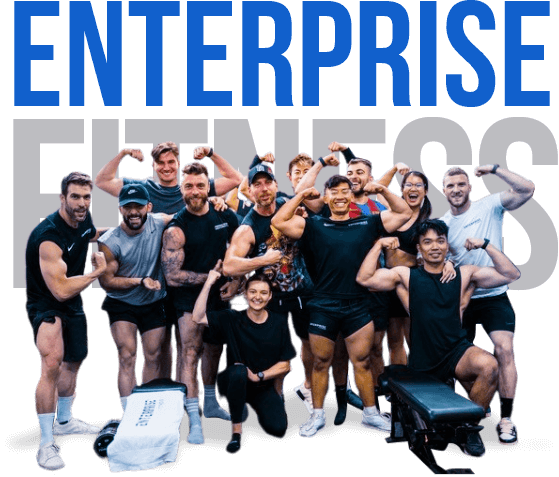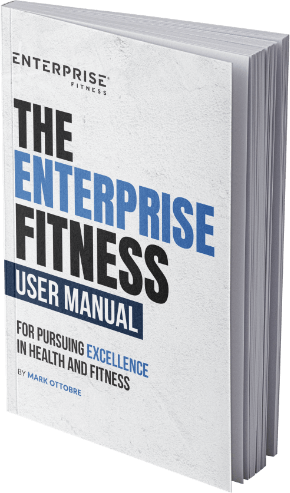Enjoy this full presenation on Preparing Junior Athletes for Success by Enterprise Coach, James Kelly.
This is a must watch for parents or teens looking to progress to elite levels.
For convenience, the full transcription is below with timestamps to each segment:
Mark Ottobre: 00:00:00 All right. So, this is James. Everyone knows James, but what everyone doesn’t know is how James and I met. So, James walked off literally off the street, and he came in and he said basically I want a job. I said, “Well, that’s great. Actually, I need someone to start and start pretty ASAP. So, here’s what I’ll do, can you start shadowing today or tomorrow whatever it was? He goes, “Yeah, fine, I’ll be there.” I’m like, “Okay great.”
00:00:25 I think he shadowed maybe two weeks, maybe not even that. He picked things up extraordinarily fast. My brother would have a heart attack at my hiring process back then because it was pretty much this guy walked off the street said, “Hey, I want a job.” I’m like, ” You seem like someone who’s eager and keen, let’s give you a crack.” And we gave him a crack and he worked out to be absolutely fantastic.
00:00:50 So, that was in 2014. Four years later, my hunch and my gut feel on James was correct. So, my interviewing process paid off. It was very short, very fast, and he’s still here. Today we have the pleasure of James teaching you Preparing The Junior Athlete For Success. James is an athlete himself, works with a lot of athletes. I think you get a lot out of it. So, make them feel welcome. Give a round of applause.
James Kelly: 00:01:19 Good morning guys. Today what I’m going to do is I’m going to present to you about junior development. It’s a very misunderstood part of the industry. That’s a lot of the reason behind why a lot of people don’t really delve into that training perspective as a whole. Firstly, how many of you guys train parents? If we can have a show of hands? How many of you guys are parents yourselves? Okay, great. So from that perspective, there’s a lot of good content in this for all of you to take away. You might not be able to relate to everything in it, or there’s going to be things that whether you want to take this down a business route.
00:02:04 So, it’s a very untapped market if we look at it as a whole, especially with kids. You may want to use this content to go down that route, or for those of you guys who are parents and you’ve probably got kids who are heavily involved in sports themselves, then hopefully I can provide you guys with something that’s going to be applicable to give to them and help them develop and fulfill their potential as well.
00:02:29 Okay, so do I need to read the disclaimer mark? The information contained in this presentation is for information purposes only. It does not constitute financial, legal or medical advice. You should seek further independent financial, legal and medical advice before using any information contained in this presentation. Any views expressed by third party and not necessarily endorsed by the presenter.
00:02:52 I’ll just going back to the first one. This actually is a picture of me. Alan asked me about if I would have put a picture up there, and I was like, “Who do you think that is?” That’s me in the white. This is five years ago. This actually was my debut for a team called Bolton Wanderers. It was in front of around 10000 people at the Emirates Stadium, which is, for those of you guys are interested in soccer, this is Arsenal football club, one of the biggest teams in the world.
00:03:22 The other guy in the picture, some of you may or may not know, his name is Hector Bellerin. Now, he starts weekly for Arsenal, and he’s also a Spanish international and he’s probably got about 50000 pound a week. At one stage I was touching shoulders with some of the best footballers in the world or soccer players.
00:03:43 I’m going to take you guys through my story today, I’m going to use myself as a case study almost, and take you through some of the experiences I heard from not just a development perspective physically, but also a development perspective from a mental side of things as well. Because that’s kind of a very misunderstood part of junior development, and the transition from junior into elite is actually the mindset that it requires. It’s actually not as easy as a lot of people think.
00:04:15 Like I said before, before we start, if you guys do have any questions, please note them down, we’ll go through them at the end, and we’ll also do a small review as well. So, a little bit about me. This is me when I was probably 11 until the last picture in the bottom right corner, which was about three or four months ago. For me, soccer was almost a predetermined pathway. What I mean when I say that is my dad was a professional footballer before me, and also my older brother was a professional football as well.
00:04:54 I come into a family that soccer was a heavily driven thing that we did, and also being from England, soccer in general is massive and is one of the biggest sports in the world. I know Australians are more into the Fl and [inaudible 00:05:14] things like that. Therefore, soccer is, if we look at it, it’s the biggest sport and the sport that’s actually starting to get the most junior participation as well.
00:05:24 In Australia, studies have shown that kids are starting to participate in soccer more than any other sport that’s out there. For me, I started playing soccer when I was around six or seven, so not very young or at a good age where I could start to actually play in games with some actual structure, and it wasn’t just a bunch of kids running around and just doing whatever they wanted to do. I started at a good stage from that point of view.
00:05:57 When I was seven, I first started, I got to the age of 13, and 13 was when I got my real big first opportunity. That opportunity was the opportunity to trial at Liverpool Football Club. Those of you guys who know Liverpool is where I’m from, and is also one of the biggest clubs in the world as well. So, I got the opportunity to play for one of their youth academy teams. I got a trial and managed to be successful and do really well. I signed for Liverpool when I was 13 years old.
00:06:35 For me, lots of my friends all wanted to play football, and I just happen to be lucky to get the opportunity and be identified as someone that Liverpool Football Club we’re willing to have a look at. I was there for two years until I was 14, 15. The biggest thing that let me down was my late development as a youngster. I was at the very bottom end of my age group. So, I was only a week away from being the year younger. I developed really late from a physical point of view.
00:07:14 At some stage, I was playing games and I just couldn’t compete regardless of my technical, tactical ability. My ability to actually compete from a physical point of view just wasn’t there. At that age, it’s not really something that you can overcome.
00:07:32 That was the first thing where I got knocked down. It was difficult because my dad had been there, my brother had been there. I always had these people telling me that the chances of you actually making it are going to be quite slim. He always used to tell me two things, he used to tell me hard work beats ability if ability doesn’t work hard, and the other one was attitude gets you three quarters of the way there.
00:08:07 As we go through, I’ll give you more examples of where those two things started to play a big role in my development, and from the knockdowns I had, I used those principles, and they helped me to stand up and move on and actually get to where I wanted to be in terms of becoming a professional soccer player. That’s the brief rundown. I will go a little bit more in depth and I’ll give you guys more of an idea of how I progressed after that. The biggest thing that we face is the negativity around junior resistance training. So, we have a lot things like the body isn’t fully developed yet, and things like it’ll stunt their growth, but these things on the grand scheme of things are myths and from the evidence that we’ve been provided with, there isn’t actually any studies that confirm that these things are actually part of the issue.
00:09:14 Studies have shown that it can improve performance, and it can reduce injuries. So, when we go over to the next slide, I’ll actually give you guys an excerpt from a publication over some studies that gives you a bit more insight into these types of things. The majority of injuries observed during resistance training are based on a few factors; poor exercise prescription, poor technique, lack of supervision and incorrect use of equipment.
00:09:47 From that, we can basically say that coaches don’t necessarily have what they need in terms of skills and skill sets to actually start to develop kids from a younger age. This is essentially what I want to help to provide you guys with today. Like I said, whether it’s from a business route perspective where you want to start to delve into that market of training kids, or whether it’s for you guys to start to develop your own children’s athletic abilities. Hopefully, you guys can take some things that are going to be very applicable to development in that sense.
00:10:26 We flick over. So, in the red is highlighted the most important parts of the statements. There is no evidence to suggest that resistance training will negatively impact growth maturation during childhood and adolescence. That goes back to me saying, there’s been no studies that clarify that these things are going to be an issue if the strength training is taken out in the correct circumstances.
00:10:52 Youth resistance training can improve one’s cardiovascular risk profile, facilitate weight control, strengthened bone, enhance psychological wellbeing, improved mortar performance skills, and increase a young athlete’s resistance to sports related injuries. That’s a big one. If it is carried out properly and efficiently, then you can actually start to get these really beneficial rewards from doing the strength training with the younger athletes.
00:11:21 The biggest one there I suppose you would highlight would be sport related injuries. So, any parents would not want their child to get injured. If we start to get into this process from a young age, and we start to develop their ability to start to create more stability and more muscle mass which is going to start to protect joints, it’s going to make them better to deal with more loads through the sports, then that’s going to be a very beneficial thing that we can provide them with from a young age.
00:11:56 Improvements in selected motor performance skills. Things like long jump, vertical jump, sprint speed, medicine ball toss. You can see that these things are all really explosive movements, and if you guys can provide me with a sport especially a team sport that doesn’t require some sort of explosive ability then by all means be my guest. It’s probably not going to be possible. All sports are very explosive. They require a high level of conditioning from this perspective. Again, if we can start to develop a child’s efficiency to carry out these things from a young age, then we’re going to put them in a really good position to achieve their potential and really excel as an athlete.
00:12:43 The last one, the risk is no greater than many of the sports and recreational activities in which children and adolescents regularly participate. For me, this is probably the biggest one. What this goes through is a study done where they studied resistance training in relation to what the sport and what the injury risk for the children actually look like.
00:13:05 Should we read through, in a prospective study that evaluated the incidence of sports related injuries in school age youth over a one year period, resistance training resulted in 0.7% of 1576 injuries, whereas football, basketball and soccer resulted in approximately 19%, 15% and 2% respectively.
00:13:23 From that, if we present that to a parent for instance, straight away, we’ve got rid of that negative stigma attached to resistance training, because studies have shown that actually the sports that they participating in are putting their kids at greater risk of injury. So, from that point of view, that’s the first thing that you can start to present to parents in terms of starting to get rid of that negative attachment. We can really start to provide them with some understanding of actually how much more dangerous the actual team sports can be done than the resistance training. But like I said earlier, we need to make sure that resistance training is carried out in the right circumstances, with the correct understanding of where the child is at in terms of development, and all these things we’re going to delve into as we go along.
00:14:27 This is just a funny picture I put together. Granted, parents are going to think that the children possess all the ability in the world. But realistically, there’s still development, and they haven’t learned the finest skills of certain sports. So, on the left, we’ve got Cristiano Ronaldo. He’s one of the most athletic soccer players out there, and one of the best players in the world. The athleticism he displays is next to none. So, sprint speed, jumping ability, all these things are just absolutely out of this world.
00:15:06 This tends to be the level of athleticism crazy sports parents think their child has. Unfortunately for them, that’s not always the case because they haven’t started to develop those skills efficiently enough to perform at this level just yet. That’s not to say they won’t get there, but the harsh reality is kids have got a lot more development to do to get to this stage. Then on the right we’ve got the level of athleticism the child often displays. This is a baby giraffe trying to stand up. If we look at a lot of kids when they are participating in sports, this tends to be quite close to the truth in terms of they don’t necessarily know how to control their own body function in relation to the skills of the sport at a young age. However, with resistance training and the correct training within the sports, they can gradually start to progress and get to that stage.
00:16:09 That takes me on to reasoning with the parents. What do we need to provide parents with to actually let them put their kids into your care and trust you as coaches to go, “Actually, what you’re saying makes a lot of sense. I’m going to let you try and develop my child to give them a better chance of success.” So, if children can play team sports, they’re ready for some type of resistance training. The reason I put resistance training is because it doesn’t necessarily mean they’re going to be lifting weights. Depending on the age, depending on what stage of development they are currently at determines what type of training strategy you’re going to take.
00:16:52 Like the study showed before, a lot of team sports are a lot more demanding than actual resistance training. That’s part of the issue we can address from the start. Helps to develop fundamental movement skills on motor patterns. This refers back to my last points on the pitcher in the slide before, is kids don’t have the level of efficiency with their motor skills and the movement skills that they need to progress to that elite level at an early stage of development.
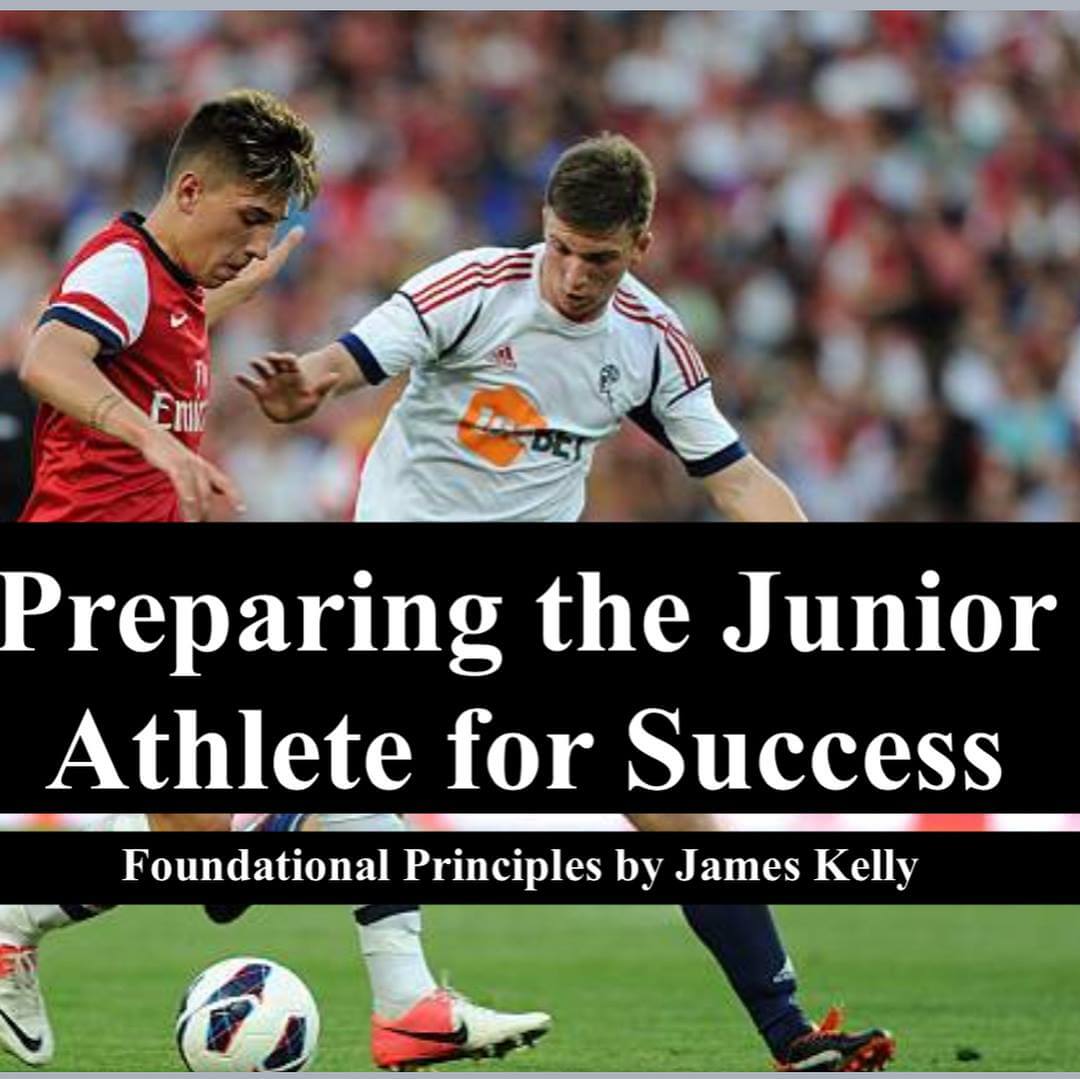
00:17:24 What we can do dependent on what type of training approach we take, is we can start to develop their ability to become more efficient at the motor patterns and the movement skills required in a vast array of different sports. So, whether that be from developing the sport itself, or whether that be from developing movements in the gym. A lot of these things are going to carry over to one another and make them a lot more well prepared for when they move and start to progress to more specialized sport.
00:17:59 Training from a young age helps to improve inter and intra muscular coordination. Inter muscular coordination is the ability to use a multitude of different muscles to perform a specific task. Intra muscular coordination is the ability to use one muscle really efficiently. So, what it helps to do is it helps to develop the strength of the muscle fibers within a single muscle so they can perform whatever movements they want to perform with a more efficient output.
00:18:31 If we start to get them strength training or resistance training from a young age, we can really start to develop these things, and then if we look at it from an athletic perspective, these things make up the basis of all your explosive movements. So, if kids can be really efficient, intra muscularly and inter muscularly, then they’re going to be able to be more explosive. They’re going to be able to run faster, they’re going to be able to jump higher because their body as a whole is moving a lot more efficient and are able to activate and engage everything they need to carry out those tasks.
00:19:07 Help the transition from junior level to the elite level. Okay, so, this is massive. Junior sports in comparison to elite sports are a massive jump. For me, I left school when I was 16, and at the time I didn’t have a soccer club. 16 is the age where you decide either you’re staying at school, you pursue some kind of athletic career, whether it be in soccer or another sport, and sign a scholarship deal. But for me, I didn’t have the opportunity to sign a scholarship deal. I did have the opportunity to stay at school but I decided against that, and decided I wanted to pursue actually trying to get to becoming a professional soccer player.
00:19:58 So, what I decided to do was I embarked on a college course. That college course was primarily based around playing soccer. We used to train every day. We used to play one or two games a week, dependent on the schedule. But we also had to complete some kind of school work as well. We completed a course called Btech in Sports and Athleticism, or something along those lines.
00:20:26 It was a combination of still learning but also it was putting me in a position where I was training every day and I was able to start to make that push and it was probably the final push to get into where I wanted to be. Fortunately for me, after a year, I got the opportunity to sign for a professional team. The team was called Wickham Wanderers. Unfortunately, the only negative about the whole thing was it was actually three hours away from home, and I was only 16 years of age at the time.
00:21:05 So, I made the decision from an early age to move away, and I was living with just myself and one of the other boys and then we had a lady who looked after us both, but she wasn’t really there very much. So, we just took it upon ourselves to grow up if you like. We used to cook for ourselves, we used to do everything for ourselves, and this was a point to where I really started to mature, and it was a big turning point for me.
00:21:35 What I used to do is in terms of the level of commitment from a junior perspective to an elite perspective, I used to wake up at 4:00 AM on a Monday morning, I used to take myself to the train station in Liverpool. I used to get a train or two trains as it was at the time, which used to take me three and a half hours to get to training on Monday morning. I used to get there late every day but the coach understood that I was coming from a far place. So, he used to let me off with 15, 30 minutes here or there. Then, I used to train for the whole day. Train for the rest of the week on a Saturday afternoon, depending on where we played, I’d get back on the train and head home for the remainder of Saturday night and Sunday, and then on Monday, I repeat the whole thing over again.
00:22:26 I did that for a whole year. That was a big experience for me as a youngster and really helped me start to mature and grow up. Then at the end of my first year, so I signed a two year scholarship deal at Wickham. At the end of my first year, unfortunately, the club could no longer afford to pay for the youth development system. So, we all got released from our contracts. We rolled without a club again. This was a point that really started to test me from a mental perspective. I couldn’t really go back to school because they were already a year into the process. I didn’t have a team to play for. So, I was at a crossroads of, well, I don’t really know what I’m going to do.
00:23:16 I managed to get the opportunity to trial for Bolton Wanderers. So, Bolton Wanderers was the team I was playing for in the first picture that was up there. At the time, they just dropped out of the top flight of English football. So, they’d just dropped out of the English Premier League. So, for a kid who wanted to get to the stage of being a professional soccer player to be given an opportunity to be a club with such a prestigious persona about them, it was a massive deal.
00:23:50 I did really well. I was there for a trial for six weeks, made a really good impression and they signed me on a two year professional deal a week before my 18th birthday. That was one of the highlights of my younger junior years. That picture that was up there was a week after I signed. That was my that debut against Arsenal in front of 7000 fans or whatever it was. It was quite a big deal. I didn’t really know how I was going to deal with it. We took the lead, we went one, nil up, and the fans were booing us and giving us all sorts of shit. But it was just a great atmosphere and so brilliant to be a part of it.
00:24:40 Now, looking back on that and looking back at some of the players that played in that team against us, pretty much every single one of the plays in the opposition are still playing now at some kind of high level. For me, that was the start of the journey from a professional sense, but it took a strong mentality. The ability to transition from that junior to elite level was difficult.
00:25:10 I started with my resistance training when I signed my initial scholarship with Wickham Wanderers. We didn’t do an awful lot, but we started to train those fundamental movements. We were doing things like Olympic lifting, We were weight training at least twice a week. This was a 16, 17. For me, that was the point at where I really started to develop and excel from an athletic perspective. When I was younger, like I said, I got released just based on the fact that I wasn’t big enough, and I wasn’t strong enough. Now, here I was three, four years later, and all of a sudden I was one of the strongest, I was one of the fastest, and I was competing with the senior boys.
00:25:57 So, this is a big thing to understand is that kids don’t all develop at the same rate. It’s a heavily driven industry where people are going to say, “Well, you’re 13 years old, you’re not big enough, you’re not good enough, you’re not strong enough.” But realistically, kids are all going to come of an age where they start to develop those skills, and they start to get their man strength, if you want to call it that. For me, that age was 16 or 17. From that point, I never really looked back. I started to really push on and really do well.
00:26:32 That transition was hard at first. But as I started to get into it, and I started to understand the things required from a commitment perspective to actually get me to that stage, it started to become a lot easier and a lot easier to transition. But again, if we start to develop more muscle control, more musculature in general, extra bone strength from resistance training, all these things are going to increase the potential of avoiding injuries in team sports, especially in your younger children. So, a lower risk of skeletal fractures as I discovered.
00:27:12 Develop a general strength base to further improve skills and abilities within the sport. Okay, so as a coach, what I aim to do is to give them a good base of strength. What that then does is that enables them to start to develop the actual skill of the sport a lot more specifically. So, it’s not a case of we need to start trying to mimic unfilled movements and all these types of things. Because realistically, we can’t start to mimic sports specific movements in the gym. Especially in team sports, it’s just not possible.
00:27:49 So, if we provide them with a strong base of strength, then that’s going to enable them to develop. They’re going to be able to train harder for longer. They’re going to avoid injuries which is an important part of development. If you’re injured all the time then essentially you miss out on being able to play the sport therefore, you can’t develop the skills associated with the sport.
00:28:14 Bottom line, strength training is a definitive component of athletic preparation in its own right. The key to proper athletic development is the correct balance of strength training and participation in sport. Like I said, the strength training or the resistance training aspect is only developed in that general strength base. However, their ability to be good at the sport comes from playing the sport. It’s as simple as that.
00:28:45 Factors to consider. So, age. Individuals of the same age can differ by biological age sometimes up to three to four years. Going back to my younger days when I was at Liverpool, I probably possessed the athletic ability of maybe an 11 or 12 year old when I was 14 years old. Whereas some of the boys I was playing against had the athletic ability of maybe a 15 or 16 year old. You can see how that gap in development is going to obviously start to affect the level of performance I’m going to give. Because regardless of my technical, tactical ability, my skills, I’m just going to get overpowered because some of these guys have got let’s say a three or four year jump in terms of development on me. Which is going to make it really difficult.
00:29:40 What you can do is you can keep track of the development stage of an athlete. There is something called the Mirwald Equation. What it does, is it tells you roughly at what stage a child is in their development physically. Then from using that, you can then start to taper and find out exactly what method of training you’re going to use to help start to develop them.
00:30:05 So, what it takes into account is height, sitting height and weight. You can find it online. If you go online, you can get the equation. You can just punch the numbers in, and then it gives you the estimation of roughly where they will be at in their development. It’s important to perform every three to six months.
00:30:27 We don’t necessarily know when they’re going to start to develop faster. So, if you keep track of that every three to six months, then you might find four months later, they’ve actually really started to develop, which means the actual training approach you’re going to take is going to change. It’s an important thing that you keep track of it.
00:30:50 Maturation. So, the very time and speed of progressive change within the human body from childhood to adulthood. Again, it’s going to play a massive part. Like we’ve been saying, kids all mature at a slightly different point. The biggest thing is it’s going to change the training that you actually use with those children. It can actually differ quite significantly as you’ll see, as we start to get deeper into it.
00:31:18 One training method for someone who’s two years an early maturer is going to be completely different to the training method you use with someone who’s a late maturer. Engaging and fun. So, for the younger age groups, you don’t want them to be doing boring things. It’s an important perspective if you give them a program that we would follow, the chances of them following that are probably going to be pretty slim.
00:31:43 You want to incorporate fun movements, things that are going to keep them moving. You don’t want them to be standing still for too long because they will get bored. If they’re let’s say under the age of about 10, they are just going to go off and start their own thing and you’re going to lose control quite quickly.
00:31:59 Master and motor skills. Moving specific muscles to perform specific tasks. Kids start to develop this from a young age, like from birth literally. You can see as kids start to develop and they start to refine those motor skills, and they start to be able to do more adult like movements if you like. This is no different to sport. Sport is similar to the development kids have at a very young age. It takes time. They have to master those skills and they have to develop them. If they don’t repeat those skills over and over again to create some kind of efficiency, then the body’s not going to retain that information.
00:32:45 Mastering fundamental movement skills. Balance, pretty straightforward. Teaching them how to master the bounces important. A lot of team sports require lots of changes of directions. They have lots of contact that they come into and they have to be able to land and balance the body efficiently. Local motor skills. So, anything like running, jumping, hopping, those types of things, kids obviously start to develop the ability to walk, and then they start to develop the ability to run. Then it’s their ability to start to transition those skills into some more sports specific skills associated with whatever sport they may play.
00:33:28 Then finally, have ball skills. So kicking, throwing, catching, lots of coordination involved in that. If kids are playing things like footy and NFL, you’re going to start to really develop those skills. Training age. Determining factor for how simple or complex of an approach you can take. This essentially is the be all and all. Regardless of the kids biological age, the training and age still takes precedent.
00:34:01 You may get a 17, 18 year old, what if they’ve still got training age of zero, you need to start them with the bare basics. Whereas you might get an 11 or 12 year old with a train age of three or four, then at least you know they’re going to have some kind of fundamental skill advancements. Their motor skills are going to be pretty well developed.
00:34:24 After you’ve assessed them, you’re probably going to be able to start those kids at a further points down the track of the resistance training stage. So, training age is the most important thing. Other, so, working with children’s check. Obviously, to work with children below the age of 16, you have to have your children’s check to be able to do so.
00:34:52 Training a prepubescent. Age wise, girls from one to 11 years old, so, girls develop slightly faster than boys. And boys from one to 12 years old. That’s your rough guide again, that can vary slightly. But that’s roughly the ages that you are looking at in terms of being a prepubescent and then transitioning into being an adolescent.
00:35:18 Maturation. So, slightly different then will show the ability to understand and follow instructions. For the younger age groups, if they’re not going to listen, then you’re probably just wasting your time. You want to choose those kids that are willing to listen and learn from you and understand actually what you’re trying to help them achieve.
00:35:38 Engaging and fun. So, stay fun and full of varied stimuli. If you have a varied stimulus, it gives you a broader base for development. Whereas if you just focus on one skill, they’re just going to develop that one skill. When you expose them to a stimulus for a long enough period of time, they start to become more efficient at that skill. Essentially, in the brain what happens is we have things called synapses. When kids are born, they actually possess a lot more synapses than they actually need in adult life. What they are is that the electrical signals that allow you to send that information to help you perform whatever it may be. It might be crawling in younger age, and when you get to a more developed age, it could be running, sprinting, jumping all these things, they’re all developed within the synapses.
00:36:34 If you see the transition of kids, and how much they learn when they’re younger, so, they start to pick things up really quickly because they have a lot of abundance of synapses. So, they learn to crawl, they learn to walk, they learn to run within quite a short timeframe. The reason they land so quickly yes is because they do possess a lot more synapses but also they’re constantly trying to develop those skills. If you watch a child, as soon as they try and start to crawl, they figure out it’s something new that they need to start to develop, and they try and do it over and over again. Same as, as they start to stand up, they start to stand up, they’re a bit shaky, but they keep going and going and going, and eventually, they start to develop the efficiency, and then before you know it, they start walking. That’s how they start to develop those skills is from just constantly doing it over and over again.
00:37:27 That’s no different to sports as well. Sport is the same principle, it’s a new skill, they have to do it over and over again, to start to develop an efficiency within that sport. Mastering motor skills and fundamental movement skills. Like we said, big focus on motor skill and fundamental movement skills development. The better they are at these things, the more it’s going to enable them to progress a lot faster. Minimal to low external load, the use of basic equipment such as bands and sticks is encouraged.
00:38:02 If they’ve got a lower training age, you want to start them with the bare basics. So, teach them how to master their own body weight, then you can start to progress them to things like sticks. You may look at things like overhead squats and things like that. So, teaching them how to hold their body properly as they go through those fundamental movement patterns.
00:38:24 Discourage early specialization. I’m not going to go too in detail with that, because we’ve got a slide further down, which goes into a lot more detail. For, in a pre-pubescent and into the early stages of other adolescents, you do really want to discourage early specialization. Training age. So, as training age increases, the complexity of the training can also start to increase. So, plyometrics are a great method that you can incorporate with younger kids as they start to develop. However, it is quite an advanced stage of development. You have to ensure that they have the basic control, they have the basic motor skills, they listen is a big one. They can carry out what you ask them to without too much of an issue. Then you can start to look at starting to incorporate these more advanced skills like plyometrics.
00:39:20 During childhood, strength increases in a linear fashion for both boys and girls. I’ve actually seen quite an interesting TV show which proved this point. They went into a school, a junior school so young kids. What they did is they got them to carry out a strength test if you like. What they did is if you guys know when you go to [inaudible 00:39:45] and you have to hit the bell and then the thing shoots up and hits the top.
00:39:48 What they did is they asked the kids, boys and girls what score they thought they would get on why they thought they would get it. All the girls naturally thought they would get a lower score, and the general consensus was because they’re weaker than men, men are stronger so on so forth. On the flip side, they asked all the boys what they thought they would get, they all answered the higher end. They asked why and they said, well boys a stronger.
00:40:14 Unfortunately, for those kids that didn’t work out that way. The majority of the girls tended to score higher than the majority of the boys. The boys took straps and started crying and all this. Essentially, all it was, was just to show that boys and girls develop at the same rate and a younger age, and they wanted to start to get rid of the stigma of boys should be this and girls should be this in terms of boys are stronger, they should do all these things that require being strong, and girls are weaker so they should do all the housework. That was the whole aim of the study. But that’s not necessarily the case at this age of development.
00:40:57 Moving on to training the adolescent. Girls from 11 to 19 years old, and boys from 12 to 19 years old, first one is growth. So, quantifiable change in body composition, body size, or dimensions of specific body parts. This is the area where boys and girls do start to develop at different rate. So, boys obviously, are going to start to release a lot more testosterone and growth hormone, they’re going to start to develop a lot more muscle size, they’re going to get bigger in general than most girls are.
00:41:35 With this, this is a difficult stage of development to define in terms of chronological age due to different maturation rates. If we go back to the Mirwald Equation, this is where this becomes quite important to use. Not all people are going to develop at the same rate. Like I said, I was a really late maturer whereas some of the people in the same age group as me were really early maturers.
00:42:01 So, it’s important at this stage, you start to be a lot more specific and start to go a bit more in depth with finding out, okay, this child is at this development stage, this is where we need to start to incorporate these things. Like we said, you want to track it on a regular basis because you can’t really put a guide on exactly where they’re going start to hit that point where they’re going to start to develop a lot faster.
James Kelly: 00:42:33 An early mature, that’s going to be someone whose close to the Peak Weight Velocity. What Peak Weight Velocity is, is the point that where they have the quickest point in which they grow if you like. These ones are going to be kids who you’d consider hypertrophy style of training with. They’re going to be at a point where they’re starting to develop a lot more muscle mass. Testosterone is going to be really high, growth hormone is going to be really high.
00:43:04 So, what we want to do is we want to take advantage of that, and we want to put them into more of a hypertrophy style of training, so they can really start to develop and really start to grow into their own body if you like. With a late maturer, That’s going to be someone whose closer to Peak Height Velocity. Peak Height Velocity is the point that where they have their biggest growth spurt in terms of a height perspective. With these guys, you want to consider more strength and motor skill development.
00:43:35 When they start to grow, you’ll find that they won’t be able to coordinate their body parts as efficiently because they’re growing into that new found size. If we keep developing those motor skills and their ability to actually control their body as they start to grow, then that’s going to put them in a great position to start to progress them beyond that. Again, if you start to focus on that strength training while you’re at that stage as well, you’re going to build a nice solid base. So, when they do reach the point that they are at Peak Weight Velocity, you can really start to push the hypertrophy style of training upon them from there.
00:44:13 These two players told they weren’t big enough to be successful in the sports. On the left hand side, we have Lionel Messi. For those of you who don’t know, he’s one of, if not the greatest footballers to ever walk the planet. When he was younger, he had a growth hormone deficiency. So, he developed a lot slower than all of the other boys. They told him he wasn’t good enough, he was never going to make it, but he was just possessed with such a natural ability and skill that he got the opportunity at Barcelona when he was really young. They actually started to pay for growth hormone replacement.
00:44:58 It wasn’t going to get him to the stage at where all the boys were. But it was going to help him start to develop at a much more efficient rate. Eventually, he got to, I think he finished at about 5’7′. So, he’s still relatively small, but it wasn’t necessarily the physicality that determined how successful he was going to be. He just had such a great understanding of the game and such a natural ability that that was more important than anything else at the end of the day. Yes, they did start to develop his strength, but even with that, his ability to just carry out things that other people just couldn’t.
00:45:41 If you watch him, you see his highlights, he plays against some of the best people in the world and makes them look like kids, literally. He skips passed them just so easily, and it makes you think like this was a kid who was told he was never going to make it. He wasn’t good enough, he wasn’t strong enough. He didn’t possess the physical attributes to actually get to that level. Now, when you see him, it’s just it’s incredible to see.
00:46:08 On the other side, Michael Jordan. All you guys know Michael Jordan is one of the best basketballers ever. Michael Jordan was told he was too small to be in a junior basketball team. Just that in itself I feel like that’s the expression that Michael Jordan would have had on his face when he became successful to whoever the person was who said that. Again, it goes back to the whole general strength base. You’re not trying to make kids super super strong, you’re just trying to develop a really good general base that’s going to enable them to develop within the sport much more efficiently.
00:46:49 Moving on to mindset. I’m not a mindset coach obviously, but there’s things that have happened in my career that have really helped me grow from a mental perspective. The thing I said to you guys earlier was my dad always used to tell me two things; hard work beats ability, when ability doesn’t work hard and attitude gets you three quarters of the way there. These things are very prominent in my progression.
00:47:20 One of the things is winning and losing. The current mentality around this with kids is very poor. If you don’t have skills now, they tend to teach everybody’s a winner. Personally, to me, that’s a load of shit because what kind of position does that put kids in when they get into the real world? Whether it be from a sports perspective or business perspective or a general life perspective, we always lose at some stage. No matter what type of losing it is, we don’t always come out on top.
00:47:53 We start to develop this in kids early that, don’t worry, you came last, but you just took part and you’re a winner. That sets up a really weak mentality. In terms of transition from junior to elite sport, they’re going to fall short by a million miles, if that’s the mentality they take. Because once you get to that point, it’s a cutthroat industry, no matter what sport you playing.
00:48:15 Winning is easy, you don’t learn much from winning. Losing is hard, but it’s where you learn and improve. So, there’s no real negative emotions associated with winning. Once you’ve won, it’s all happy. It’s an easy thing to take part in. Once you lose, that’s when you start to see character traits come out.
00:48:36 For me, in terms of losing, this is the point at where you evaluate. So, you sit down, you evaluate your performance, you figure out exactly why you lost, you figure out what you need to implement to improve the things that you’ve identified on a short term basis, and then you figure out how to implement them on a long term basis. This can be applicable again to anything; business, sport, just general life. We’re not always going to win. So, if when you lose it affects you really badly, then you’re not necessarily going to get much out of it.
00:49:11 When you get to an elite sport level, losing part of the game. But unfortunately, you have to pick yourself off and crack on and figure out exactly where he went wrong. You’ve got to go, okay, as a team, what did we do wrong, and as an individual, what did I do wrong? In individual sports, this is where it becomes a little bit more difficult. I spoke to Aimee during the day about Harry.
00:49:39 For those of you guys who know who Harry is, he won gold at the Commonwealth Games recently. So, congratulations to Aimee on that. But Aimee went in with the perspective of what if he doesn’t win gold? Silver and bronze are still an achievement, but from an individual perspective, it’s still not first. Fortunately for Harry, he did come through and he won and he did really well. But Aimee said the look on the faces of the guys that came second, and third, they were so miserable and angry.
00:50:11 This is where in an individual sport, you’ve got to have a really good system around you have coaches, family members to actually pick you up. Because ultimately at the end of the day, there’s no one else to blame but yourself. Within a team sport, For people who do like to put the blame on other people, there’s other people to blame. But also you’ve got to take some parts of your own personal responsibility for why the team didn’t win as well.
00:50:38 It’s about understanding the differences between the sports that kids may start getting into and develop that mindset around winning and losing and how it can both be beneficial in that sense.
00:50:53 Being told by coach that you’re not good enough or not big enough. Again, so kids can become really disheartened by this. If we go back to the previous two examples, they are two really good examples of people who were basically like, “Fuck you, I’m going to prove you wrong.” So, developing that strong mindset of, okay, you’re going to have knock backs or it’s not the knock backs that account, is how many times you stand up and start to try and prove these people wrong.
00:51:20 The biggest thing that I learnt is that especially in team sports, it’s a game of opinions. When I signed for Boston on my first professional contract, the manager thought the world of me. I was playing every week, I was doing really well, everything seemed perfectly okay. Then all of a sudden about six, seven months into the season, the first team manager got the sack, a new manager come in, whole new bunch of staff come in, and then we had an in house game basically two or three days after the new manager had come in.
00:51:55 From kick off, the ball come back to me, I turn back to play out, and a [inaudible 00:51:59] in the other team come through and cleaned me up and ruptured my ankle ligaments. That was me for four performance. I didn’t kick a ball again. New manager had just come in, all the other boys had the opportunity to show what they could do. He essentially picked his team from that, the boys that he liked, and basically stuck with them through the whole process.
00:52:23 I come back after three months of rehab, then another month of actually getting back up to full fitness because I’ve missed so long. By the time I got back into the actual full-time training, the season was pretty much coming to a close. Fortunately for me, I had another year. At the end of the year, I went away. I’ve done everything I could to get fit as possible, become as strong as possible from a physical perspective. Just give myself the best chance to show him what I was made of and get the opportunity to get back into the team. Unfortunately for me, that wasn’t the case, and that didn’t happen. The next 12 months, I basically spent sitting on the bench. I’d come on and off occasionally, but nothing significant. This is the point at where sport becomes hard.
00:53:19 The difference in mindset from junior sports to professional sports. It’s no longer a hobby, it’s your job. When you’re a kid, it’s just something you enjoy to do But when you get to that elite level, it’s your job. You got to go do it every day. Yes, you get paid well for it, but there’s lots of things that come with it that can be quite difficult to deal with.
00:53:42 A big one, other people’s jobs are on the line as well as your own. So, coaches, players, all the backroom staff, your performance essentially determines whether they’re keeping the job or they get sacked. This is massive in America. If you look over a lot of American sports, they get these big lucrative contracts, but at the end of the day, they’re not really contracts because if they want to cut someone, they go in, and come back, off you go.
00:54:10 This is where it becomes okay. Well, as a team, you need to be on the ball all the time, and you need to be performing. As individuals, you also need to be on the ball and you need to be performing because if not, then managers are going to get sacked, players are going to get sacked. That’s just the harsh reality of sport. It’s no longer that junior game where you just go in and you have fun and these things. There’s actually real demands of the sport that start to become apparent.
00:54:41 When you’re in a team where if you win it determines whether people can pay the rent and look after the kids and things like that, then you start to see what angry men look like in the sport environment. Trust me, I’ve been there and it’s not pretty. People will get super aggressive because essentially, they can’t survive if you don’t do your job, and you can’t survive if they don’t do their job.
00:55:05 So, there’s a lot of trust, there’s a lot of pressure that comes with transitioning into that elite environment. It may not be everything you expect it and things may not develop the way you expect it. So, that’s essentially what happened to me. To begin with, things roll perfect, couldn’t put a foot wrong, and then all of a sudden, it took a big turn and I couldn’t even get a game at the end of the day.
00:55:33 This is the biggest thing that kids don’t understand is, it’s not all good. I’ve had some of the best times I’ve ever had as a soccer player, but I’ve also had some of the worst times I’ve ever had just as a person in general.
00:55:48 That year I didn’t play, that was really challenging for me. We used to train five days a week, sometimes twice a day. I used to go in and always remember the things that my dad said to me; hard work beats ability when ability doesn’t work hard, attitude’s three quarters of the way there. But this time it didn’t work for me, but I wanted to come out of it knowing I’d give everything I could to get an opportunity.
00:56:15 So, every day I’d get up, I’d be the first in, and I’d be the last out. If we could go home earlier, I’d stay back and do more. I’d always try and do more than everybody else in the gym. I just always trying and get that opportunity and show the manager that well, I deserve an opportunity. I’m coming in, I’m working harder than everybody else, my attitude’s always good, I’m always polite.
00:56:40 So, it was hard. I used to wake up in the morning, I used to absolutely despise going to training because as a kid who grew all his life wanting to be a professional soccer player, and I was at the point where I absolutely hated it. I just didn’t want to play soccer no more.
00:56:55 This is the thing that kids don’t understand is from a mental perspective, it can get quite difficult when you get to this stage, because different managers have different opinions of you. Some managers think the world of you, some managers don’t think anything of you. Unfortunately, that’s just the harsh reality of sports. Unless you’re one of the blessed ones like Leo Messi and people like that, they’re super blessed but they’re still going to work hard every day. And they still possess those attributes where they go, okay, I’m going to work hard, I’m going to have the right attitude. That’s a big part of development from junior to elite. I’ve seen people with all the ability in the world, like some of the best players have ever played with but their attitude’s really bad. Whether that be from a point of view of they get in a game situation where it becomes quite tough and they just give up, which means they become a player that the manager can really rely on regardless of how good they are, how good their ability is. If the manager can’t rely on you when the going gets tough, then he’s going to put that person in, who’s going to work hard and give everything they’ve got.
00:58:05 To the point where kids’ friends who aren’t in the same environment, in the same situation, get to a stage where they start going out, they start partying, they start drinking. If you’re in a group of friends where that’s quite prominent, and you’re the only one within professional sport, it can be very easy to get dragged out of that into the going out and partying.
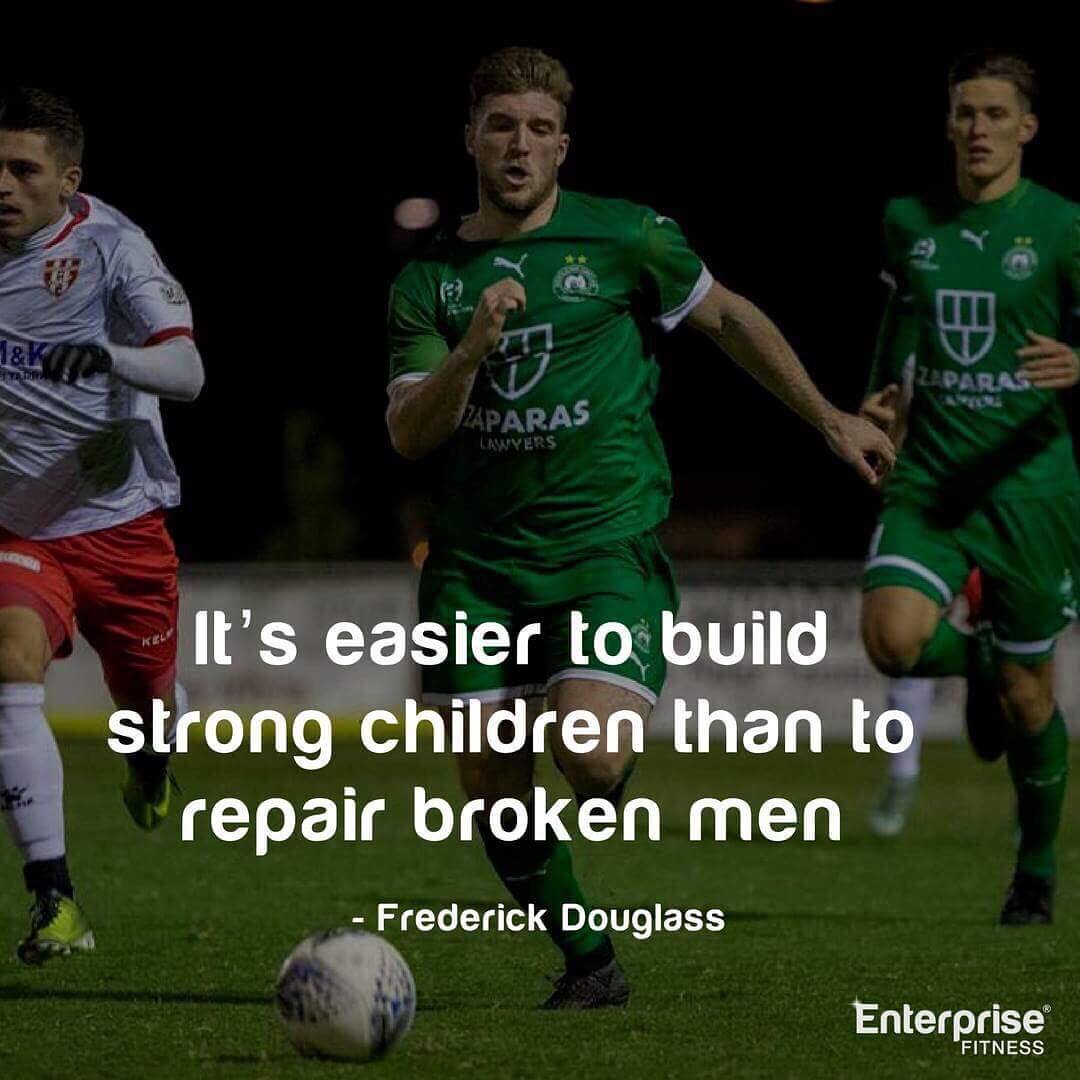
00:58:32 Again, that’s a mindset thing of, okay, what’s your direction? Where are you going? Where do you want to go? And helping them understand, well, doing what your friends do is not the answer to getting where you want to be. Again, that’s just part of some of the issues that can become apparent in that transition, is kids want to be around the friends that they’ve grown up with their whole life. But unfortunately, to be successful, sometimes you have to sacrifice those things.
00:58:59 That’s what I did like … My friends were going out all the time. None of my friends were really massive into sport, but I got the opportunity, and I started to surround myself with the guys that I was playing soccer with more. I’d still go out and see my friends I grew up with and things like that. But I knew myself that if I was associating with them too much, and I was going out too much and doing the things that they were doing, it was going to hold me back.
00:59:28 That’s where, again, a high level of commitment towards improvement. When you get to the elite environments, like I said, it’s a cutthroat industry, no matter what sport you look at. So, if you aren’t constantly trying to get better and improve within your discipline, then there’s someone right on your shoulders waiting to take your place.
00:59:47 For me, I was trying to be that person, trying to take someone’s place and didn’t quite get to that point but I always had that high level of commitment and always wanted to give more and always wanted to try and prove that I was worthy of getting in the team. For kids, they need to understand they might have to do that extra work because they might be trying to replace a senior pro who has been 10 years in the game in the same position. In order for them to get to the point where they can take a position, they need to show a serious amount of commitment to actually start to shift those people out of those positions.
01:00:25 The negative effects of early specialization. This is where we start to delve deeper into this. We’ve got enjoyment. Kids like to play sports with their friends. I was speaking to a client the other day, and he said his little daughter goes to gymnastics. And he said, it’s not necessarily the gymnastics that’s the biggest thing for her, it’s the fact that she goes to gymnastics with a friend. When she gets there, she has someone she can already speak to and they can talk about whatever they want to talk about.
01:00:56 For him as a parent, he can speak to the little girl’s parents as well. If you take that enjoyment side of it away, that can start to be quite difficult, and that can actually start to discourage children from being involved in sport.
01:01:10 Pressure. So, if you’re just focused on one sport, then the pressure and the demands start to become a bit more apparent. There’s pressure to win, there’s pressure to succeed. Even though they may not be taught those things in school. When you get to sport, you always want to win regardless. So, if it’s just one sport all the time, and they might not be in the most successful team, then the pressure starts to build and gradually they’ll start to fall off a little bit.
01:01:44 Expectation. Again, similar principle, once they start to specialize, they’re expected to commit to that one sport. No matter where it might be, the managers want them to they have to train these times a week. If they’re not here, they don’t play. Whatever it may be, that weight of expectation becomes greater if they’re just involved in that one sport.
01:02:06 Discovering and trying out other sports. So, the sport that you may envision your child playing may not be the sport that they actually want to play. Give them all the options that you can, and they’ll find their own way. Whatever it is they choose, just support them and help them become successful within that.
01:02:24 Overuse injuries and patents and overreaching or over training. This is quite the big one. If you look at as kid start to develop at an early age, firstly, they start to crawl then they start to walk, then they start to run. So, they build up a gradual efficiency and ability to be able to do those things very well. We start to specialize kids too young, then the only thing that becomes more apparent when they get to the sport level is the demands of the sport. So, the load and the intensity placed on the body in relation to learn a new skill.
01:03:10 If we put kids in a situation where they’re playing one sport four or five times a week, for a 12 month period, there’s got to be a point where their body is not going to be able to keep up and not going to be able to handle the amount of load.
01:03:24 As an example, if we look at a nine year old who’s been playing basketball for let’s say, a one year period. From a skills perspective, they’re very underdeveloped. From a body perspective, they’re also quite underdeveloped. So, if we put them in an environment such as basketball where it’s quite a high impact sport. If we look at it, it’s lots of high intensity short sprints, and it’s lots of maximal jump efforts. So, on the body and the joints and muscles, it’s actually really demanding.
01:03:55 If we paired up with the fact that they don’t have much efficiency with the skills associated with that sport, then if we put them through too much, they’re going to eventually reach the point where they are over training, or they are over using muscles and they are gradually going to push to the point where they do get injured.
01:04:18 Going back to the crawl, walk, run analogy. It’s exactly the same principle when you start to teach kids new sports. You want to gradually help them to develop those skills over a period of time. So, if you can change the stimulus from one sport to another throughout the year, whether it be they play different sports in season or whatever it may be, however, you can break it up, the more sports you get them involved in, the better it’s going to be to start to develop different skills within different sports. And we’re going to avoid using the same patterns and using the same muscles to perform the same tasks. Yes, there’s going to be a crossover in some sports, but as a whole there’s going to be a lot of differences as well to start to avoid using those patterns over and over again.
01:05:03 You may look at developing them slowly. They may play basketball for three months of the year to begin with. They may train two, three times a week, then you start to push it a little more. They may do the same three times a week, but then they stopped playing six months of the year. Then you increase it to four times a week for the six months of the year. Whatever it may be, and then eventually, they get to that stage of specialization.
01:05:28 But what you’ve got to realize is you’ve gradually built their efficiency up, one, dealing with the demands of the sport, and two, producing and improving their abilities within the sport to a more efficient level. So, to compare that on an extreme level, if we look at someone like LeBron James. LeBron’s at the point where he’s incredibly efficient at his sport. We look at basketball as being really high impact, high jumping, lots of short sprints. Because LeBron has built such an efficiency to those stimuluses’, they no longer seem like a really high demand activity because his body’s become so efficient at it.
01:06:12 So, for someone like that, their training is going to be a lot different. But he’s built up to that over a period of time. He’s become a professional, he’s gone to the points that where he is training every day. But he hasn’t just started training every day from a young age, he’s gradually built to that. Then his efficiency’s improved. So, now those explosive movements like jumping and sprinting aren’t as demanding on his body and he can recover a lot faster from most things.
01:06:38 In team sports, it also decreases the ability to develop positioning. Positioning from a restart obviously is different in each sport. If you can put kids within a variation of different sports, they started create a better intelligence in general. As well reactions. So, in relation to defending or talking. So, the systems of defending or attacking vary in different sports.
01:07:06 If they can have an understanding of a different amount of sports on the different things required to transition between those things, then the chances are when they start to specialize, they can use all that information and start to hone in on that one actual skill that they want to improve.
01:07:24 Movement in relation to the ball. Again, different sports, different movements in relation to the ball. So, you just improving the overall understanding and timing and sequencing in relation to tactical cues. Again, tactics are used differently in different sports. I’ve been watching an NFL documentary on some of the things and are just mind blowing. Like the things that quarterbacks have to remember is just crazy. They say all these crazy words and all of a sudden they all know where they’re going.
01:07:56 If you start to develop kids’ understandings in a multitude of different areas, then they can start to actually develop those skills a lot better for when they start to specialize.
01:08:08 The fundamental movement patterns. This is going to be the basis of where you start to develop your training from. At the top, it says the complexity and specificity can only be accomplished in practice or competition. That’s from a guy called Dr. Fergus Connolly. Dr. Fergus Connolly has worked across heaps of different sports. He started in soccer, he actually started at Bolton Wanderers just before my time. Then he’s worked in the NFL, he’s worked in the AFL. He’s worked in the NRL, he’s worked in the NBA. He’s worked in all these different sports.
01:08:47 Seeing as coaches like I said to you earlier, our main aim is to develop a general strength base because we see a lot of coaches out there trying to reenact sports specific skills in the gym. When realistically, it’s not possible because there’s so many variables in team sports especially. Like you don’t know when someone’s going to try and tackle you, or you don’t know if someone’s going to make a pass, or whatever it may be. There’s all these different stimuluses that you have to react to really quickly.
01:09:25 So, from a movement perspective in the gym, we can’t replicate that. The only way they can improve from a sport perspective is by practicing the sports, playing the sport as much as possible. But like we said, it’s finding that fine line of, okay, when are they specializing, and when are they developing the skills? Because they’re going to get to the point where they get injured and things, if it’s just specialization from an early age.
01:09:51 Athletic patterns. We’re looking at things like acceleration, deceleration, jumping, landing and change of direction. A lot of these things are going to be developed by some kind of plyometric variation. So, acceleration, plyometric variations. For younger kids, you may look at a simple thing to start off with. A simple plyometric movement is something like skipping and skipping is something that a lot of young kids do. But it’s developing those repeated bound and off the ground. So it’s a really simple thing you can start to incorporate very early.
01:10:32 Then, from an acceleration point of view, we want to start to develop speed in a horizontal movement pattern. So, from skipping, if they can master that, you may look at something like a standing long jump. Now, they’re not just bounding up and down producing force, they’re starting to produce that force in a horizontal movement. That is associated with accelerating in a certain direction.
01:10:58 From there you may start to progress that to multiple bonded movements. So, now they’re starting to have to repeat those efforts through those bounds in that horizontal movement pattern, which eventually is going to lead to them starting to develop their acceleration skills.
01:11:14 Deceleration, we have high impact landing and change of direction plyometrics. Deceleration is probably one of the more advanced ones, and one of the hardest to develop. Deceleration is things like when you come to a dead stop. If you envision someone going from a flat out sprint to having to stop and change direction, that’s where your decelerators get put under a lot of stress, and they have to be really strong.
01:11:39 So, you may look a high impact landing stuff, maybe dropping from a box and being able to absorb that force efficiently, or you can look at more change of direction, plyometrics. You may start looking at things like horizontal plyometrics, and vertical plyometrics. So you can develop a standing long jump from a standing long jump, where they then after producer vertical force into a box jump, things like that. So, you’re starting to really put more load through those decelerators as they jump on the stand long jump. They then have to decelerate, and produce force in a completely different direction.
01:12:19 Jumping. So, obviously, a simple one for jumping is making them jump. Then again, plyometric variations. A lot of these are going to have crossovers. If you improve plyometrics in general, you can almost count on the fact that things like jumping are going start to improve because of that.
01:12:39 Landing. Again, when you jump, you have to land. So, you can take jumping and landing as one to begin with. You make them jump and then you make them really focus on the landing to start to develop that. Then landing variations. Again, that can link in with your deceleration drills. So, high impact landing.
01:13:02 You might get them to drop off a box and be able to land and absorb that force really efficiently. Change of direction. So, we’re looking at things like coordination. For coordination drills, you want to look at things where they have to react to what you say, rather than giving them a predetermined pattern. We see a lot of people use things like speed ladders, but speed ladders don’t develop any kind of speed or change direction, because it’s a predetermined pattern, and you know exactly what’s going to happen before you do it.
01:13:36 If we can start them to get to a point where they’re reacting to what you say, rather than giving them a pattern to carry out, then you’re going to develop that skill a lot better. So, coordination drills, reaction drills, you can look at things like having them in the middle of four different colored cones, and they have to react to the color you say. Firstly, they have to figure out what color is where and then they have to react as quickly as they can to what you tell them to do.
01:14:05 That’s something you can start off by making it really simple. But you can actually make it quite advanced where you may call up multiple different colors. So then you start to develop the reaction time, their ability to coordinate the body move as fast and as efficiently as possible. Also, the reaction time to being able to respond to the different things that you say. They are your athletic patterns from a strength pattern perspective. These are the six most imperative things that you want to start to train any child from a younger age. We’ve got a hip hinge or a pull, we’ve got a lower push, horizontal push, horizontal pull, vertical pull and vertical push.
01:14:51 What I’ve done is I’ve given you the basic movements that you would start with. Most of them are all body weight movements. Some of them will be loaded slightly but not in excessive. So, for your hip hinge and your pull, you’ve got your hyper extension, so body weight into an RDL and then into a trap bar deadlift. So that’s a movement that is one of the biggest, most fundamental movements in any sport.

01:15:23 The ability to hip hinge and hip hinge efficiently is going to build a really solid foundation for any development. Lower push, so split squat, body weight squat, heels elevated dumbbell squat, barbell back squat or front squats dependent on the sport that you’re focusing on.
01:15:41 Again, teaching them how to master the body weight. Gradually develop them. So, you see a lot of them aren’t that different to what we would do with a normal client, but you just need to be aware of exactly where you want to start to incorporate them based on things like development points, training age. All these things gradually start to tie in together and start to build the basis of where you would start someone.
01:16:09 Horizontal push. So, push-ups, dumbbell bench press, barbell bench press, could be a barbell or inclined bench press dependent on the sport. Horizontal pull, seated row, single arm dumbbell row, bent over dumbbell row. So, just a gradual progression. Again, vertical, you’ve got pulldown support, supported chin up, body weight chin up. Actually, with chin ups, it tends to be the more chins up someone can do, it tends to be a good correlation to how fast they are.
01:16:39 If you get someone who can do like tension of straight away at a young age, then the chances are, they’re going to be reasonably fast in whatever sport they choose. So, that’s a really good thing that you should develop from a young age.
01:16:51 Vertical push. So, we got single arm dumbbell shoulder press. You may have to regress that slightly. So, an overhead movement can be quite unstable. So, you may look at it more of an angled press first before you go into a true overhead press. Then into an Arnie press and into an overhead barbell press.
James Kelly: 01:17:14 Just some simple progressions and some simple guidelines that you can use in relation to all the other things we’ve gone through that are going to determine at what point you actually start to introduce certain systems into the development of whatever age group you are training.
01:17:34 Okie dokey. Thank you guys for listening. Like I said at the start, the contents I provided to you can be applicable in different ways. Whether it’s a business thing that you might start to develop. Like I said, it’s a very untapped market. So, there is lots of money to be made but people tend to avoid it just because of a lack of understanding. You may want to use it for your own children. I know there’s a few in here that have got kids who are probably heavily involved in sports. So, hopefully I’ve given you some takeaways to help to start develop them and help them fulfill their potential. Also, you guys may have clients already that might have come from a similar background as me. So, it may enable you to relate to them a little more and figure out exactly what you could implement to help them start to get better results. Whether it’s from a mental perspective or physical perspective. Hopefully, you guys have took something out of it that you can start to use with people of the same background as me.
01:18:43 In terms of training, obviously, I am more of an athletic driven trainer. I do have about four spots available. So, if any of you guys are interested in training to develop a specific sport maybe or you just want to develop your understanding in terms of developing athletes from a young age or more of an advanced age, then please do speak with Andy when you guys see him next. And you guys, we can arrange that together.
James Kelly: 01:19:16 Besides that, let’s go through any questions you guys have. So, who would like to go first?
Speaker 3: 01:19:27 I’ve done a bit of work with under 14s soccer, football. And I’ve noticed there is quite a few kids that have suffered from growth injury or diseases like that [inaudible 01:19:41] So, this disease is something it’s called. So, do you know of any good studies that basically proved that resistance training is a good progression and a good preventive action to prevent those injuries?
James Kelly: 01:20:00 Yep. Look, I can’t tell you any off the top of my head, but I’m pretty certain if you go on Google Scholar and you start to research more, you’ll find heaps and heaps of studies. That’s actually something I suffered with when I was younger. So, probably when I started to specialize when I was probably 13, or 14, that’s an issue I had as well. Personally, I think if I would have done some sort of resistance training, it would have helped avoid that injury. As well, if those kids are really specialized in soccer already, that’s obviously going to play a big part.
01:20:37 So, they’re always under that constant impact when they play soccer. That’s going to contribute towards that. It might be a case of they need to reduce the intensity in the amount they train. They may need to incorporate some resistance training to supplement that to begin with, and then you’ll probably they will get back into that sports and they probably will be a bit more robust.
Speaker 3: 01:21:03 Thanks.
James Kelly: 01:21:07 Anybody else? Yes.
Speaker 4: 01:21:20 The correlation between chin ups and speed. Does that apply to all sports to say even somebody doing athletics and sprints?
James Kelly: 01:21:30 I first heard it from a guy called Joe DeFranco. I don’t if you’re … So, Joe DeFranco uses it with a lot of his NFL athletes. It’s just a general indicator. Sometimes it might not correlate exactly. Like for me, my chin ups aren’t great, but I’m actually quite fast. But he said 75% of the time, if not more, you see that the athletes who have got really strong chin ups are going to be the fastest out there on the field.
01:21:57 So, it will be within a multitude of different sports. Just in general, chin ups correlate with sprint speed. That can be from athletics on the track, to NFL players, to soccer players wherever you want to transition in that way.
Speaker 5: 01:22:23 [inaudible 01:22:23]
James Kelly: 01:22:24 Yes, Joe DeFranco.
Speaker 6: 01:22:24 I do have a question.
James Kelly: 01:22:24 Yep.
Speaker 6: 01:22:28 Is it a neutral [inaudible 01:22:29] do you know that?
James Kelly: 01:22:32 No, but you would obviously progress them as and when you see fit. So, neutrals obviously going to be easiest, then you’re going to go [inaudible 01:22:39] then you’re going to [inaudible 01:22:41] I assume if you start to develop the grit patterns, then they’re obviously going to start to build a much more stronger base for a chin up. But I am pretty certain that it is a neutral because they’re going to get more requirements from the rounds as well.
Speaker 6: 01:22:58 Is it more indicative of for reps or added weight one rep max?
James Kelly: 01:23:02 More indicative for reps. The more reps they can do off just from a go, then the more indicative that is of sprint speed. Obviously, if you start developing their 1RM, it’s probably going to develop their ability to do more reps as well. But yeah, it’s from a reps perspective, not a 1RM perspective. Any others?
Speaker 7: 01:23:31 Quick question, just in terms of resistance training, injury rate? Is that per session, or is that over the lifetime? Was it every time they train, they’re exposed to a 0.07% chance of injury and roughly-
James Kelly: 01:23:45 If we go back to the study. The study was done over a one year period in school aged youth. So, over that one year period, those are the percentages of injuries that resistance training contributor to, so, 0.7. And then obviously, they were the ones quite successful in terms of your actual sports.
Speaker 7: 01:24:11 That’s cool.
Mark Ottobre: 01:24:14 Right, three things you learned from James’s presentation. Just yell them out and I’ll repeat it. Oh, we’ve got another question. Chin ups correlation with sprinting speed. Explaining it better to the parents, Mirwald Equation. Fantastic.
01:24:37 All right. Well, let’s give James a round of applause.

